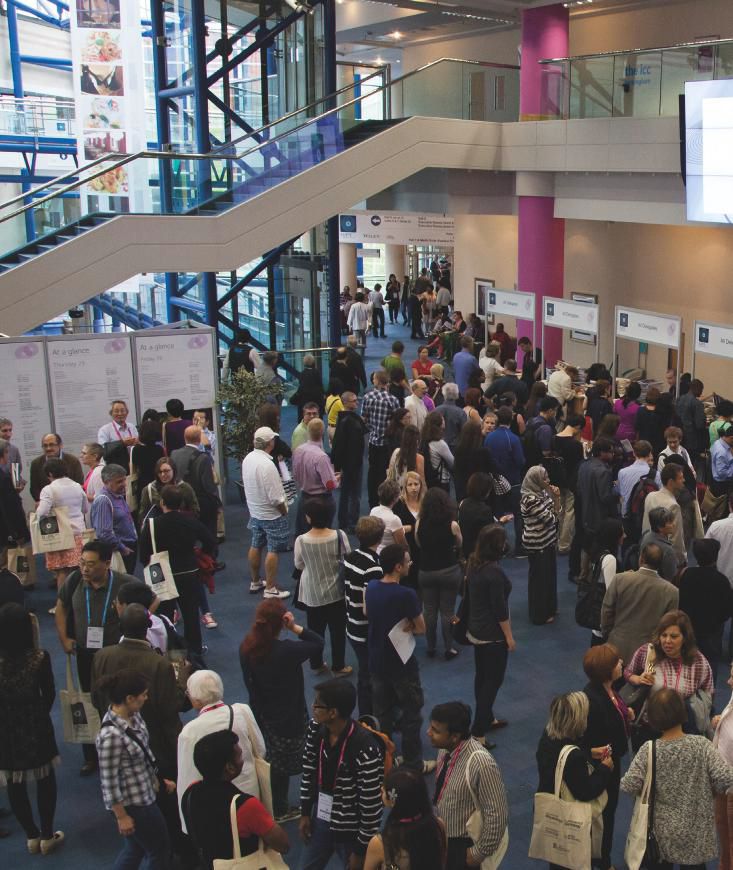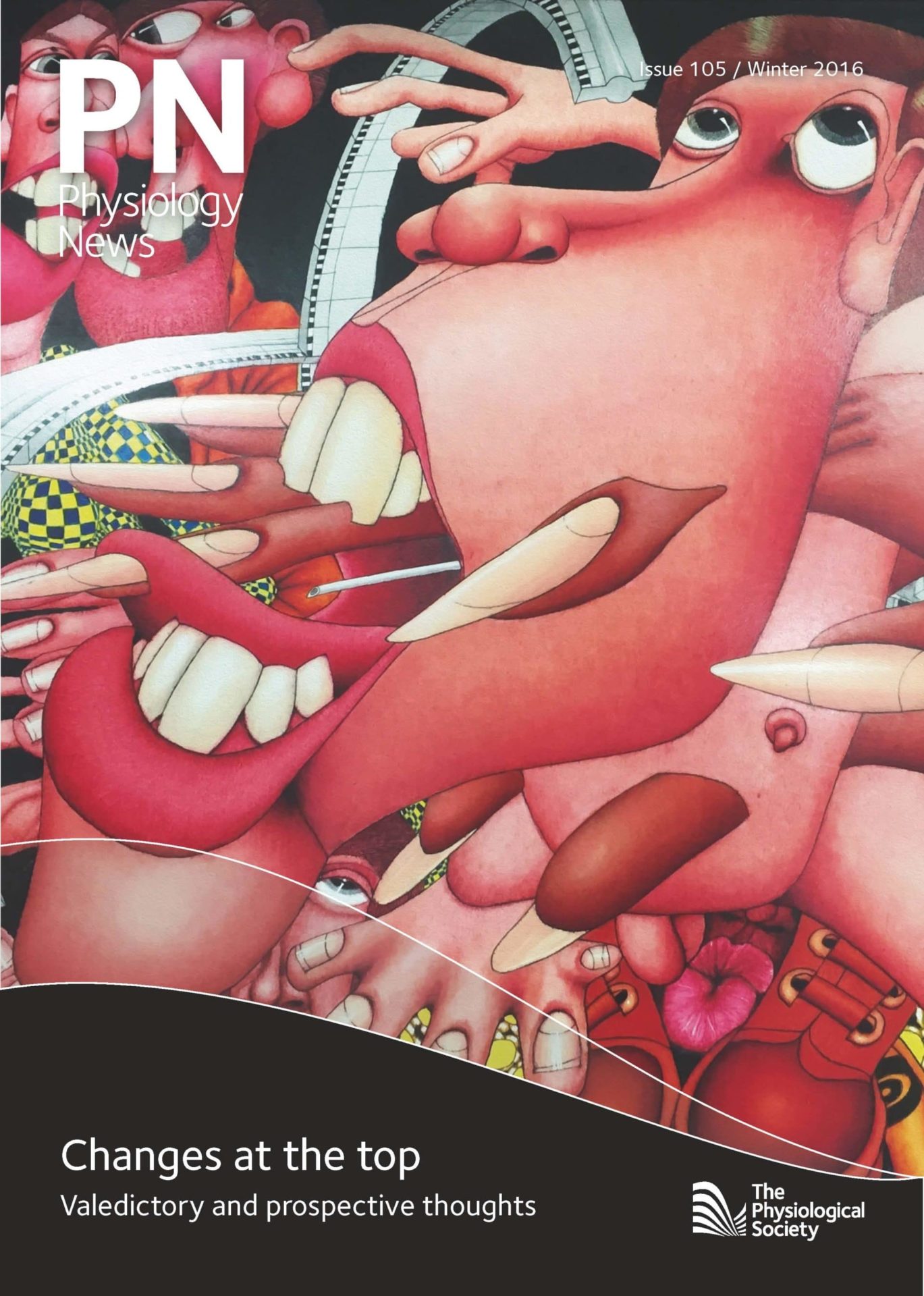
Physiology News Magazine
When will we classify a study as ‘research’?
Thoughts about current research, its future, and the creation of the next generation of physiologists
Features
When will we classify a study as ‘research’?
Thoughts about current research, its future, and the creation of the next generation of physiologists
Features
Else Bartels
The Biochemistry and Physiology Laboratory, The Parker Institute, Copenhagen, Denmark
https://doi.org/10.36866/pn.105.30

As a senior researcher working for many years in both Copenhagen and Oxford, I have followed several generations of young researchers, working in both basic and clinical science. For the last couple of years I – and several of my colleagues – have become very concerned about the more and more predefined ‘follow the framework’ research. In basic science there is still a higher degree of freedom, although there are more set task PhD projects than previously, where we in my generation had to come up with an idea and a synopsis ourselves and had more ‘play-time’ in the lab.
In clinical research many of the PhD-students are directly told that they must not go away from their very set protocol, even if they get a new idea. The wonderful breakthrough with the Cochrane Collaboration in Medical research, demanding proper scientific setups, has also created a negative result. We now produce several ‘researchers’ who have never experimented or thought completely by themselves, but believe that there is a defined way ‘how much do I have to do – and how do I do it – to get my PhD’. It is certainly not all, but it is not a negligible percent of the new researchers, who will deliver according to set rules, but forget to think Physiology into their findings in the discussion. It becomes more like a Physics or Biology report in a school setting. If we take away the need to think and use our special field knowledge when doing research, we could undermine development and progress.
The question is simple: What can be considered as research and what characterizes a researcher?
As an answer to some of this, I decided to consider my first known attempt to do science to start some discussion about ‘what is (good) science’. This attempt could be given the title ‘Do teddy bears with real fur grow their coat: A controlled case study’ . The aim of this study was to test if a real-fur teddy bear would grow back her coat if trimmed, and alternating sides and body parts of this teddy bear was cut short. The growth of the fur was then checked over time, but sadly, more than 60 years later, no re-growth has appeared. It may therefore be concluded that ‘Teddy bears with real fur coat cannot be expected to grow their coat, and should therefore not to be exposed to any removal of their fur’.
Although presenting this childhood research is to some extent written tongue-in-cheek, it is also a statement that this is a form of honest research, well thought through and with a finding of something unexplained. The experiment described was set up to be a real experiment right from the start by me at a very young age – but coming from a scientific family, I had some early knowledge about animal experiments.

As a comparison I would suggest a systematic review and meta-analysis, I and some colleagues carried out as published recently: ‘EM Bartels, VN Folmer, H Bliddal, RD Altman, C Juhl, S Tarp, W Zhang & R Christensen (2015). Efficacy and safety of ginger in osteoarthritis patients: A meta-analysis of randomized placebo-controlled trials. Osteoarthritis Cartilage 23, 13-21’.
While the Teddy bear study had got new ideas – in terms not previously scientifically studied – and an untried method for answering the problem, as well as an attempt to make the study controlled, the meta-analysis paper is answering something which has been studied and tried for several thousand years, and in a way with an expected outcome. It is highly cited, it is what I would call ‘bread and butter’ research, and it does differ from some studies of this type by suggesting some physiological explanation of the results. I am not speaking against a reasonable percentage of this ‘bread and butter’ in a PhD study, or in most researchers’ scientific life. I just want to point out that we have to think carefully to make sure that systematic reviews are of a type that brings ideas and thoughts together and generate new hypotheses, and that some study types are not just a mechanical way of generating a publication. In the laboratory setting I also wish us all to think about if repeating a set of, for instance, membrane transport experiments with another drug, and according to a defined setup, in itself is a valid project for a young person who wishes to become a researcher. If you are given a protocol which is that fixed, how much in terms of new thoughts and hypotheses do you have to come up with yourself to call it ‘your own science’.
I do believe we owe the next generation more free thoughts and less economy governed thinking, and I would like research to be for the part of a generation who does wonder and does ask questions. I do not believe it is a happy solution for anyone to continue in a school setting with no space for development. If you do not burn for your research and take charge of your project, you are in the wrong place.
As a senior researcher working for many years in both Copenhagen and Oxford, I have followed several generations of young researchers, working in both basic and clinical science. For the last couple of years I – and several of my colleagues – have become very concerned about the more and more predefined ‘follow the framework’ research. In basic science there is still a higher degree of freedom, although there are more set task PhD projects than previously, where we in my generation had to come up with an idea and a synopsis ourselves and had more ‘play-time’ in the lab.
In clinical research many of the PhD-students are directly told that they must not go away from their very set protocol, even if they get a new idea. The wonderful breakthrough with the Cochrane Collaboration in Medical research, demanding proper scientific setups, has also created a negative result. We now produce several ‘researchers’ who have never experimented or thought completely by themselves, but believe that there is a defined way ‘how much do I have to do – and how do I do it – to get my PhD’. It is certainly not all, but it is not a negligible percent of the new researchers, who will deliver according to set rules, but forget to think Physiology into their findings in the discussion. It becomes more like a Physics or Biology report in a school setting. If we take away the need to think and use our special field knowledge when doing research, we could undermine development and progress.
The question is simple: What can be considered as research and what characterizes a researcher?
As an answer to some of this, I decided to consider my first known attempt to do science to start some discussion about ‘what is (good) science’. This attempt could be given the title ‘Do teddy bears with real fur grow their coat: A controlled case study’ . The aim of this study was to test if a real-fur teddy bear would grow back her coat if trimmed, and alternating sides and body parts of this teddy bear was cut short. The growth of the fur was then checked over time, but sadly, more than 60 years later, no re-growth has appeared. It may therefore be concluded that ‘Teddy bears with real fur coat cannot be expected to grow their coat, and should therefore not to be exposed to any removal of their fur’.
Although presenting this childhood research is to some extent written tongue-in-cheek, it is also a statement that this is a form of honest research, well thought through and with a finding of something unexplained. The experiment described was set up to be a real experiment right from the start by me at a very young age – but coming from a scientific family, I had some early knowledge about animal experiments.
As a comparison I would suggest a systematic review and meta-analysis, I and some colleagues carried out as published recently: ‘EM Bartels, VN Folmer, H Bliddal, RD Altman, C Juhl, S Tarp, W Zhang & R Christensen (2015). Efficacy and safety of ginger in osteoarthritis patients: A meta-analysis of randomized placebo-controlled trials. Osteoarthritis Cartilage 23, 13-21’.
While the Teddy bear study had got new ideas – in terms not previously scientifically studied – and an untried method for answering the problem, as well as an attempt to make the study controlled, the meta-analysis paper is answering something which has been studied and tried for several thousand years, and in a way with an expected outcome. It is highly cited, it is what I would call ‘bread and butter’ research, and it does differ from some studies of this type by suggesting some physiological explanation of the results. I am not speaking against a reasonable percentage of this ‘bread and butter’ in a PhD study, or in most researchers’ scientific life. I just want to point out that we have to think carefully to make sure that systematic reviews are of a type that brings ideas and thoughts together and generate new hypotheses, and that some study types are not just a mechanical way of generating a publication. In the laboratory setting I also wish us all to think about if repeating a set of, for instance, membrane transport experiments with another drug, and according to a defined setup, in itself is a valid project for a young person who wishes to become a researcher. If you are given a protocol which is that fixed, how much in terms of new thoughts and hypotheses do you have to come up with yourself to call it ‘your own science’.
I do believe we owe the next generation more free thoughts and less economy governed thinking, and I would like research to be for the part of a generation who does wonder and does ask questions. I do not believe it is a happy solution for anyone to continue in a school setting with no space for development. If you do not burn for your research and take charge of your project, you are in the wrong place.
